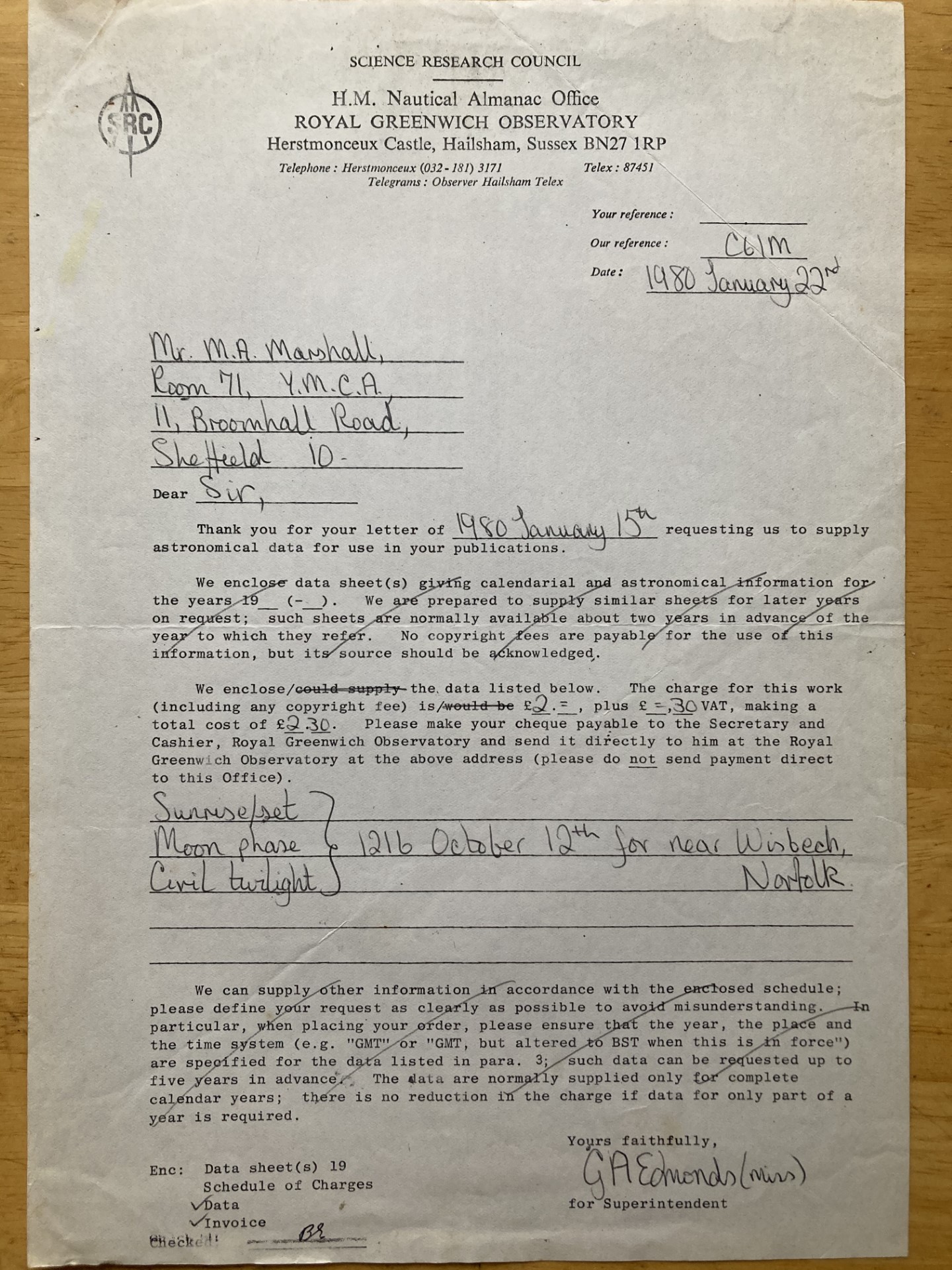
My 1980 Discovery of the Tidal Surge
The maelstrom described by the chroniclers was always thought to be due to an incoming tide. But a single chronicler, who was also the earliest to report, said that the tide had been going out.
If the tide was outgoing, and gentle enough when they entered the water, what could possibly transform this into the chaos described?
I then studied the lay of the land and discovered a ridge over which the water would have flowed, causing a massive tidal surge. Here is the data sent me by the Royal Greenwich Observatory.
Note the date, 1980, 44 years ago.

Above: 1980 correspondence from the Royal Greenwich Observatory regarding the tides on 12 October 1216 (Julian Calendar).
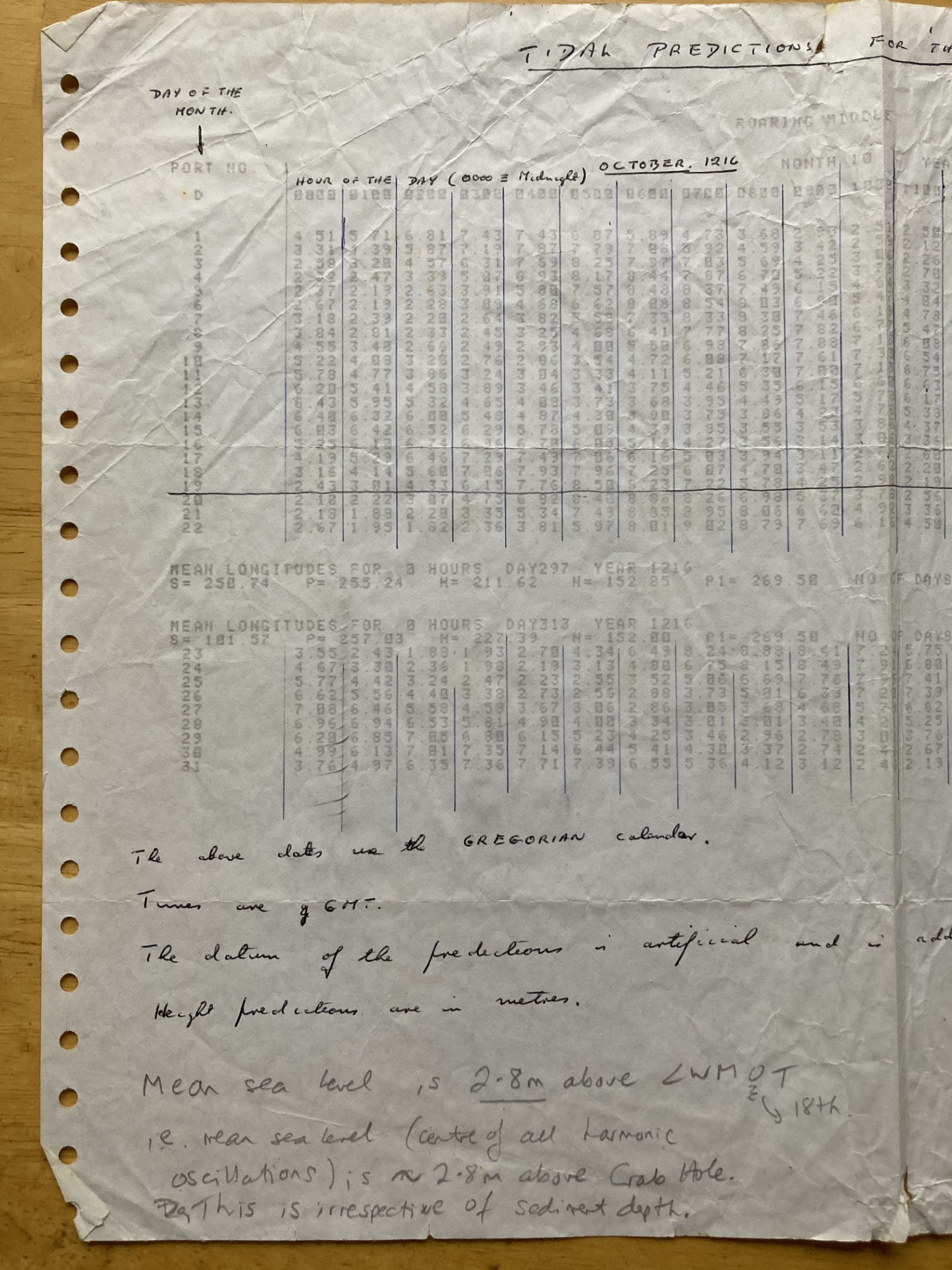
Above: Left side of the Observatory computer printout sheet (tide level against time)
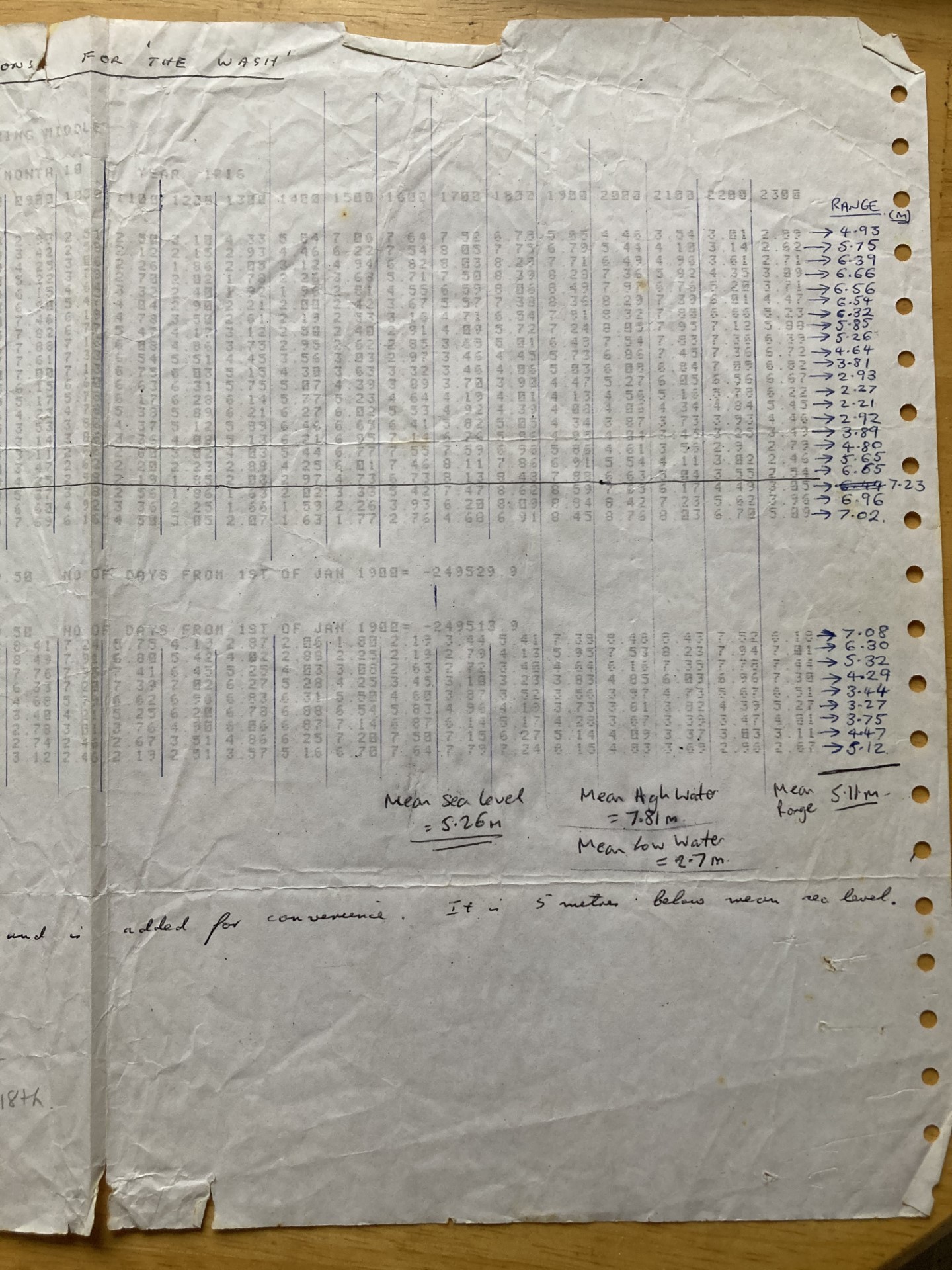
Above: Right side of the Observatory computer printout sheet (tide level against time).
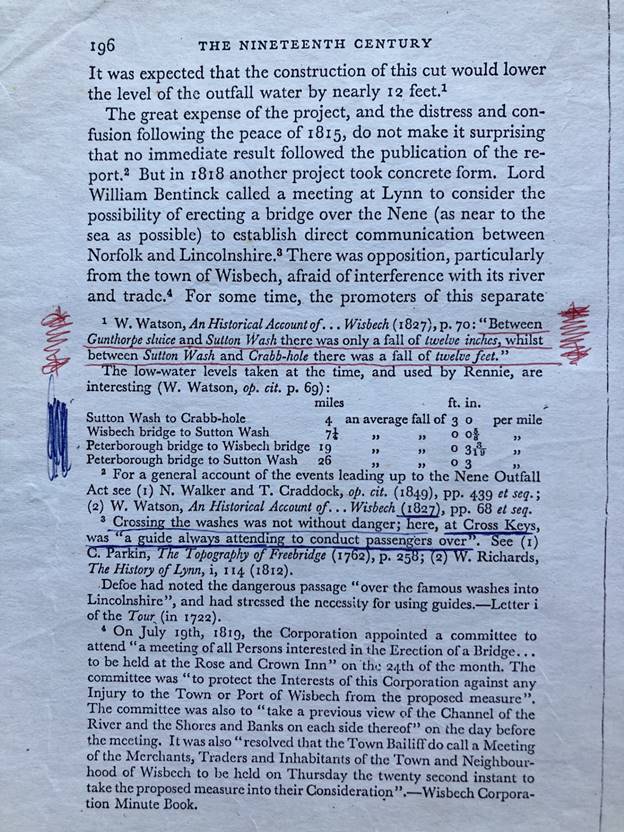
Above: The old 1827 survey which reveals the lay of the land. Note the sentence outlined in red.
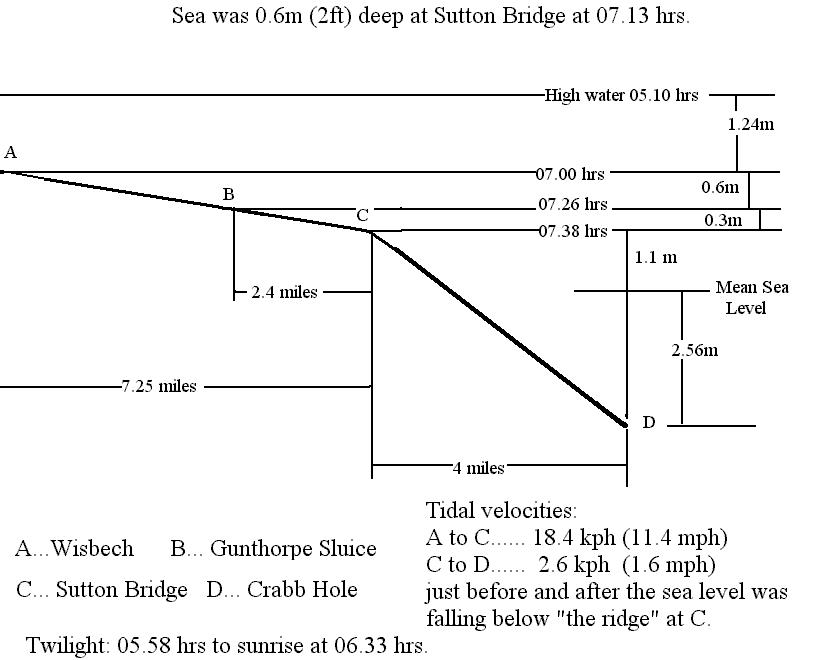
Above: Putting together all the data above, enabled me to construct this cross-section of the estuary and to rediscover the tidal surge which must have engulfed the baggage train.
In the cross-section the estuary floor runs from A-D. Wisbech is at A and the sea is at D. The baggage train crossed at C, going directly away from you "into the page". The sea level fell vertically, so when it fell below C, much of the water between A and C was still miles inland, was about to be left "high and dry"-- and suddenly rushed towards C, overwhelming the baggage train in an outgoing tidal surge.